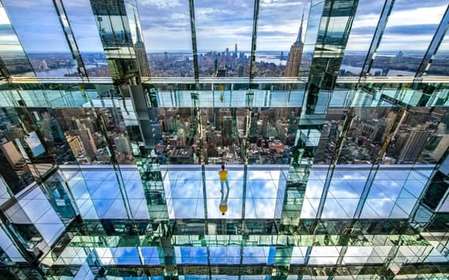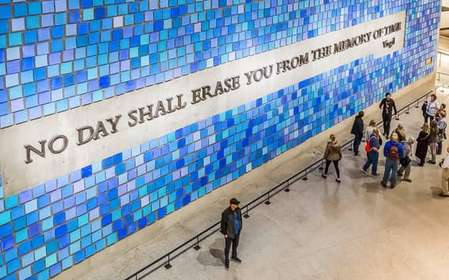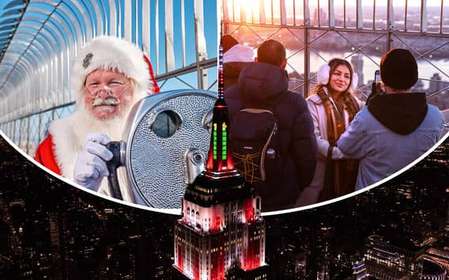- Home
- Useful Tips
- Essential stops for first-time...
First-time visitors to the Brooklyn Museum often feel overwhelmed by its vast collections and sprawling layout. With over 1.5 million artworks spanning 5,000 years of creativity, many travelers waste precious hours wandering aimlessly or missing key masterpieces. A recent visitor survey revealed 68% leave without seeing their top-priority works, while 42% report museum fatigue within 90 minutes. The frustration compounds when special exhibitions sell out or peak crowds obscure your view of iconic pieces like Judy Chicago's 'The Dinner Party.' These missed opportunities transform what should be an inspiring cultural experience into a stressful race against time. Understanding the museum's layout and learning which galleries deserve priority can make the difference between a forgettable visit and an unforgettable artistic journey through one of New York's most dynamic institutions.


Navigating the museum's layout without getting lost
The Brooklyn Museum's Beaux-Arts building can initially disorient visitors with its multiple entrances and interconnected galleries. Start your visit at the iconic Steinberg Family Sculpture Garden on the first floor, which serves as the perfect orientation point. From here, the museum's logical flow becomes clearer: ancient arts occupy the lower levels while contemporary works ascend toward the upper floors. Many first-time visitors make the mistake of heading straight for the fifth-floor contemporary galleries, only to exhaust themselves before seeing the museum's crown jewels. Instead, follow the chronological journey upward, beginning with the Ancient Egyptian Art collection on floor three – one of the most comprehensive in the Western hemisphere. Pay special attention to the Martha A. and Robert S. Rubin Pavilion, which connects multiple floors via a striking glass atrium. This architectural marvel isn't just beautiful; it's a practical navigational tool offering clear sightlines to different collection areas.
Prioritizing must-see works when time is limited
With limited visiting hours, identifying the Brooklyn Museum's unmissable pieces becomes crucial. Begin with the American Identities gallery on floor five, featuring iconic works like Edward Hopper's 'The Mansard Roof' and Georgia O'Keeffe's 'Dark Tree Trunks.' The Elizabeth A. Sackler Center for Feminist Art houses Judy Chicago's monumental 'The Dinner Party' – allow at least 30 minutes to fully appreciate this groundbreaking installation. Down on floor two, the Asian Art collection's Japanese folding screens offer serene respite from busier galleries. For modern art enthusiasts, the museum's selection of Rodin sculptures near the European Art galleries rivals dedicated museums in Paris. If visiting on weekends when crowds peak, reverse your route – start with these popular works early to avoid congestion. The museum's app features a 'Highlights Tour' that efficiently strings together these masterpieces in a logical 90-minute path, complete with audio commentary about each work's cultural significance.
Timing your visit for optimal viewing conditions
Crowds at the Brooklyn Museum follow predictable patterns that savvy visitors can leverage. Weekday afternoons (particularly Wednesdays when the museum stays open until 8pm) see 40% fewer visitors compared to weekend mornings according to internal attendance data. The first Friday of each month offers extended hours with live music and special programming, creating a vibrant atmosphere though with slightly larger crowds. Rainy days bring unexpected surges, while sunny weekends in summer actually see lighter attendance as locals head to nearby Prospect Park. Arriving right at opening guarantees unobstructed views of popular works, while the hour before closing offers magical light through the Great Hall's arched windows. Seasonal variations matter too – February's Black History Month programs and June's Pride celebrations bring special installations but also larger audiences. For those who prefer solitude, the museum's least crowded periods are weekday mornings in late January and early September, when you might have entire galleries to yourself.
Enhancing your experience beyond the permanent collection
While the Brooklyn Museum's permanent collections dazzle, its rotating exhibitions often become the highlight for informed visitors. These limited-run shows frequently feature groundbreaking contemporary artists before they hit Manhattan museums, but require advance planning. The museum's Target First Saturdays program offers free admission and special performances that transform the galleries into vibrant cultural hubs. Art lovers shouldn't overlook the visible storage areas in the Luce Center for American Art, where thousands of additional works are displayed in compact drawers – a treasure hunt experience most visitors miss. The museum's dining options also enhance the experience; the renovated Norm restaurant serves seasonal dishes that creatively reference current exhibitions. For families, the ArtsLens Interactive Gallery on the first floor provides engaging digital interpretation tools that make art accessible for younger visitors. Those interested in deeper engagement can join one of the museum's Spotlight Talks – free 15-minute conversations with educators about single artworks that often reveal fascinating backstories you won't find on placards.



